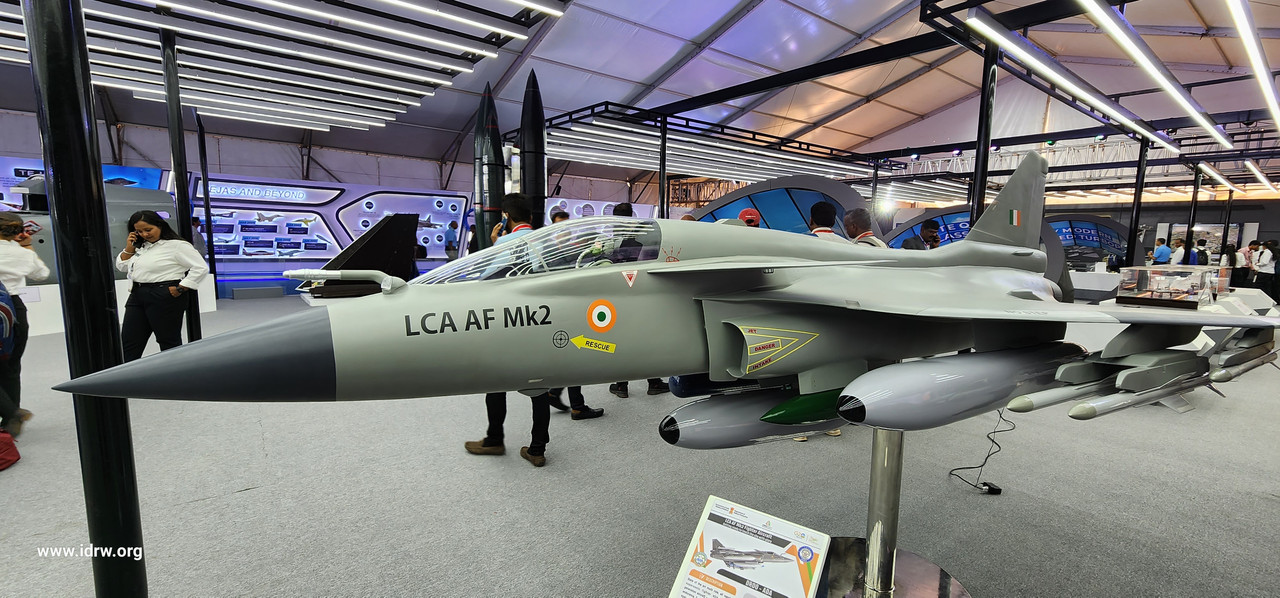SOURCE: IDRW.ORG TEAM

India’s Tejas MkII fighter jet, set to be powered by the American F-414 engine, will boast a modular engine bay designed to accommodate even more powerful engines in the future. This forward-thinking approach paves the way for seamless integration of a new 110kN engine currently under development for the fifth-generation Advanced Medium Combat Aircraft (AMCA) program.
The F-414 engine, a proven powerhouse generating around 98kN of thrust, will provide ample muscle for the Tejas MkII fleet. However, anticipating future needs for increased power, especially in the AMCA program, the engine bay has been designed with adaptability in mind.
This modularity ensures that when the time comes for engine upgrades, the transition will be smooth and efficient. The new 110kN engine, currently in the works, will be roughly the same size as the F-414, eliminating the need for major modifications to the air intake and engine bay when integrating it into the AMCA MkII.
Interestingly, the F-414 will initially power the AMCA MkI as well, serving as a temporary solution until the indigenous 110kN engine is ready. This approach not only avoids delays in the AMCA program but also allows for a gradual transition to the more powerful engine when it becomes available.
The modular engine bay design extends beyond just the Tejas and AMCA programs. Any fighter jet powered by the F-414 engine, including the Navy’s TEDBF fighter jets, will be compatible with the new 110kN engine. This opens up possibilities for broader adoption of the domestically developed engine across various platforms in the future.
India’s decision to design a modular engine bay for the Tejas MkII demonstrates a strategic vision for its air power. By anticipating future needs and ensuring seamless integration of more powerful engines, India is laying the groundwork for a robust and adaptable fighter fleet capable of facing evolving threats in the years to come. This move not only bolsters India’s self-reliance in the defense sector but also positions it as a potential provider of advanced engine technology in the future.
NOTE : Article cannot be reproduced without written permission of idrw.org in any form even for YouTube Videos to avoid Copy right strikes. Websites doing illegal reproductions will get DCMA and Legal Notices.